Juzear 61T Butterfly - The Unicorn
It’s easy to be stuck in a rut and feel cynical that nothing ever changes when you see the same old thing over and over again. The hyper-competitive “mid-fi” market of the IEM world can induce this feeling in its followers and fans alike, due to the rapid and frequent releases of mostly good but somewhat homogeneous IEMs.
But every once in a while, something comes along to shake things up. Today, we’ll take a look at the Juzear 61T “Butterfly,” one of my recent surprises.

Forewords
- What I look for in an IEM is immersion. I want to feel the orchestra around my head, track individual instruments, and hear all of their textures and details. I’m not picky about tonality, as long as it is not make the orchestra, violin, cellos, and pianos sound wrong.
- I rate IEMs within with a consistent scale from 1 (Poor) to 3 (Good) to 5 (Outstanding). An overall ranking of 3/5 or above is considered positive.
- Ranking list and measurement database are on my IEM review blog.
- The terminology for subjective impressions in this review is based on the Audio Wheel for reproduced sound defined in the technical report ITU-R BS.2399-0
- This review is based on a review sample from Hifigo (Thank you!). I have no affiliation with or financial interest in Hifigo or Juzear.
- The unit retails for $220 at the time this review was published. Unaffiliated link: Hifigo web store
General Information
Juzear 61T is a 7-driver hybrid IEM equipped with a 10mm dynamic driver for bass, accompanied by 2 Knowles balanced armature (BA) drivers from the ED series for midrange, and 4 custom 31736 BA drivers handling treble frequencies. Unfortunately, the crossover design of the 61T remains undisclosed.
The drivers are housed within a 3D-printed acoustic cavity structure situated inside the shells. This unique architecture aims to seamlessly connects the drivers directly to the stainless steel nozzle, optimizing sound transmission.
Non-sound Aspects
Packaging and accessories: The 61T comes with an average set of packaging and accessories. While the box design isn’t overly decorated, it features a stylish look thanks to the IEM photo on the front. Inside, you’ll find custom foam cutouts holding various ear tips including foam and in-house silicone ones (resembling Spin-fit), a nice cable, carrying case, and microfiber cloth.

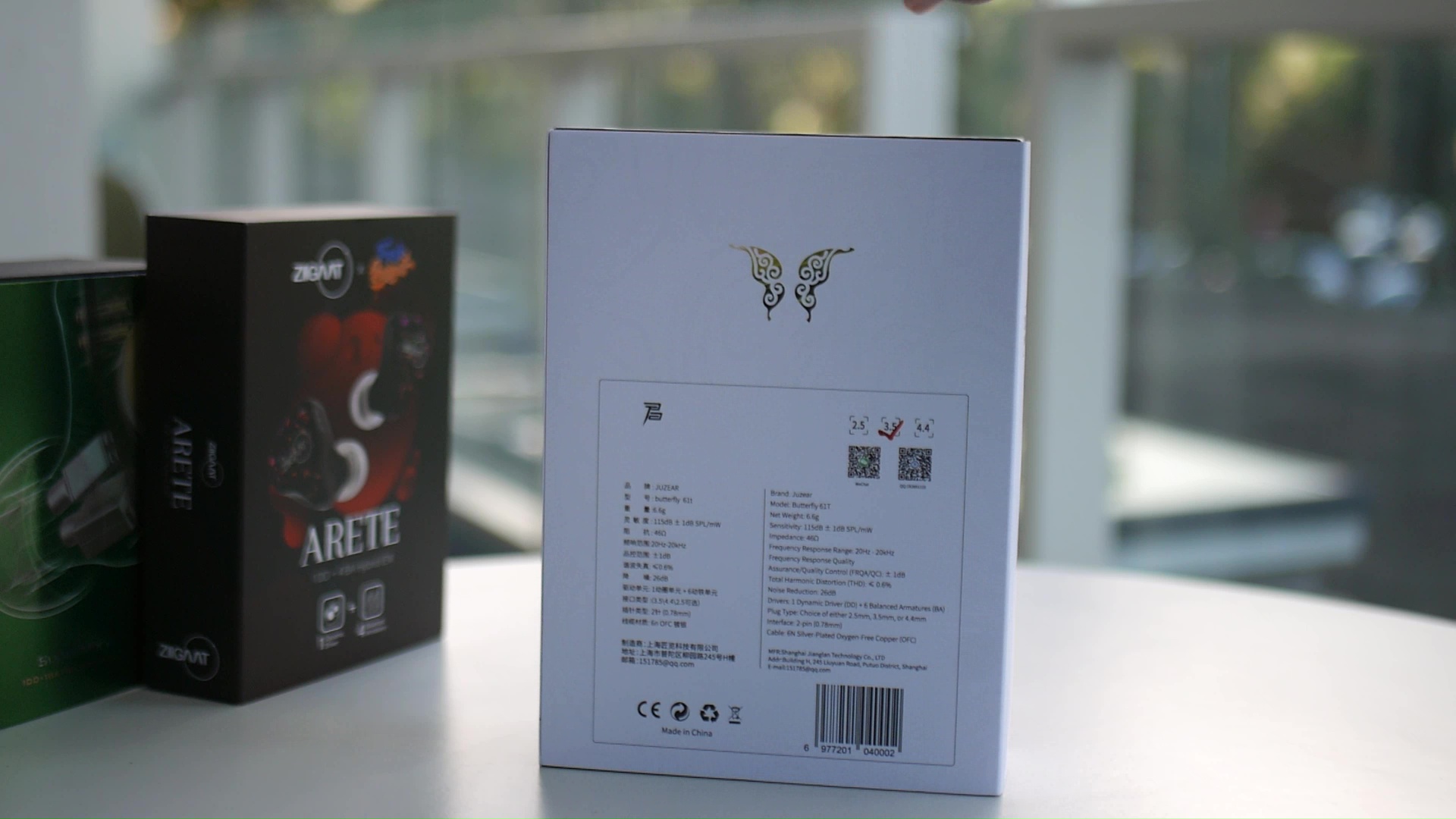





Ear pieces design: The 61T’s earpieces are thick yet medium-sized and do not apply much pressure on the ears. However, the nozzles are medium-length but rather large.



Fit, comfort and isolation: The large nozzles make it challenging to fit the 61T deeply into your ears. When worn shallowly, the IEM offers good comfort even during long sessions. Juzear claims a full 26dB noise reduction, which is surprisingly high. Unfortunately, this effective noise isolation also results in slight driver flex (the crinkling sound when re-seating the IEM). No pressure build-up was experienced.
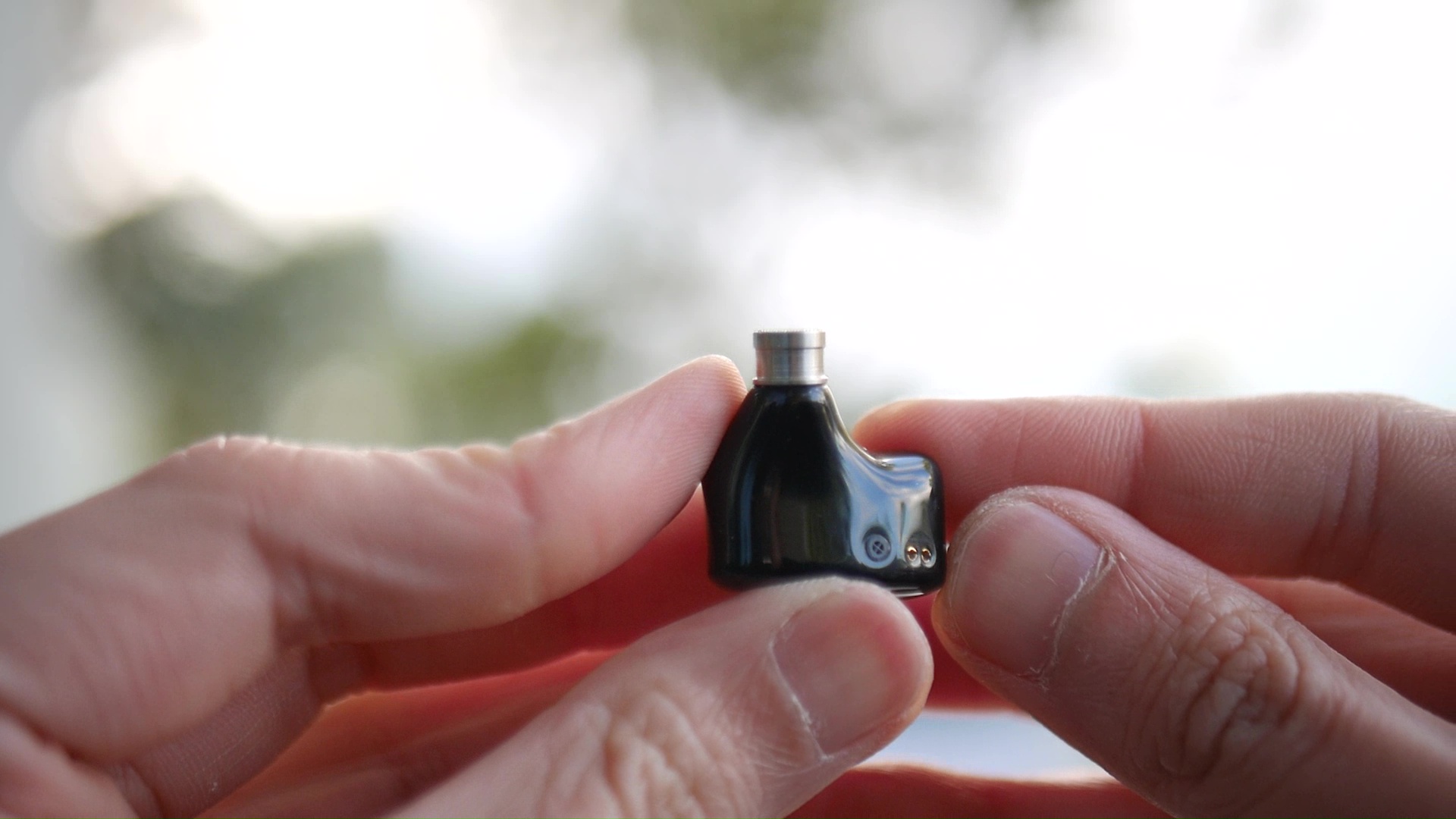




Ear tips recommendation: Due to the nozzle size, you have two choices for wearing the 61T: opt for medium ear tips for a shallow fit or use smaller ones for a deep fit. I prefer the former as it enhances the soundstage and gives the treble more bite. My recommended ear tip for the 61T is Velvet Wide Bore in medium size.
Sonic Performance
Testing setup:
- Sources: HiBy R3II, iBasso DX300, FiiO K7, L&P W4
- Cable: Stock cable with 3.5mm output
- Ear tips: Velvet Wide Bore
The subjective impression is captured using the lexicon in the Sound Wheel below. I’ll clarify the terminology as I use them. If you want to see more details of the lexicon and related reference, please have a look at the technical report ITU-R BS.2399-0.

Timbre: It is helpful to think of an IEM as a filter that highlights or subdues different parts of the incoming audio signal. This effect can be measured objectively by the squiggly lines below, called Frequency Response (FR) graphs, which measure how loud an IEM is at different frequencies from 20Hz (bass) to 20kHz (upper treble). Subjectivity is how your ears and brain interpret the effect of that filter on your music and decide whether it is “enjoyable.” There are some “rules of thumb” when it comes to tonality, but most interesting IEMs usually bend the rules masterfully.

Figure shows the frequency response of XXXX against the Harman in-ear target. Measurements were done with an IEC-711-compliant coupler and might only be compared with other measurements from this same coupler. Above 8kHz, the measurement likely does not match the response at the ear drum. Visit my graph database for more comparisons.
The overall tonality of 61T can be described as “neutral-warm with bass boost.” The tonality of 61T sounds full, meaning it has full extension towards both ends of the spectrum. Additionally, its tonality appears homogeneous, offering an even-ness across the spectrum without any perceived holes or gaps.
The midrange exhibits a warm tilt due to the 2dB lift from the lower midrange. The upper midrange is boosted correctly and peaks at the right place (between 2.5kHz and 3kHz). The amount of upper midrange boost, at 8dB rather than the full 12.5dB dictated by Harman and Diffuse Field targets, contributes to a cozy and easy-to-listen experience without sacrificing naturalness or realism.

The treble of 61T is smooth and evenly extended into the upper treble region. It is not emphasized, sitting behind the midrange and bass but not muted or dull. The treble is well-controlled without any sibilance or harshness.
The bass of 61T is powerful, slightly louder than the midrange. Bass extends deeply into the sub-bass range, and the bass line feels thick due to 61T’s decision not to hollow out the midbass to accentuate the midrange. As a result, the bass feels rich and realistic. However, those expecting a razor-clean bass line may find the bass of 61T slightly boomy.
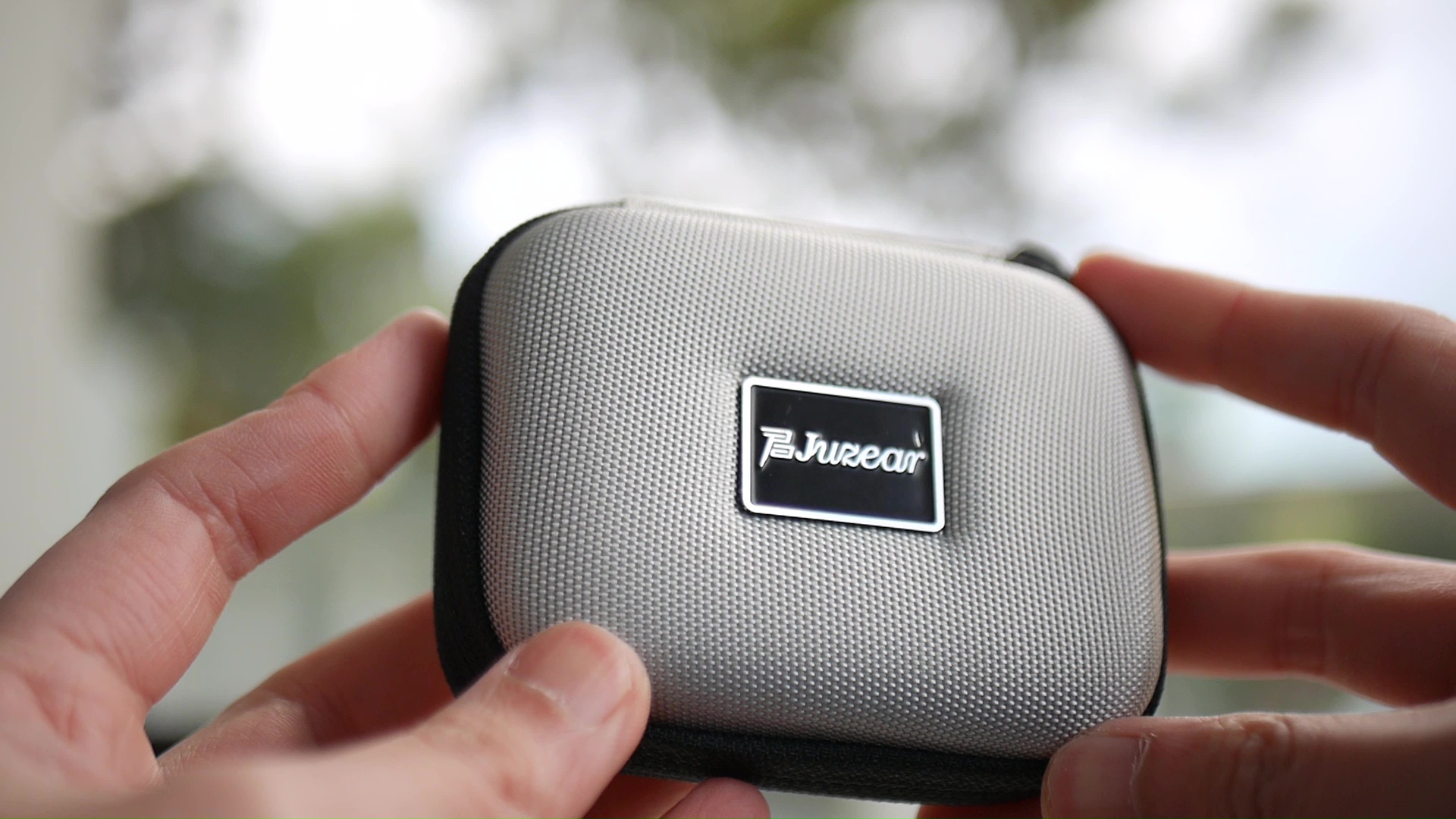
Next, let’s discuss how 61T presents various types of voices and instruments in some test tracks. The first track is Shivers by Ed Sheeran, which is invaluable for checking the harshness and sibilance of an IEM, as well as its balance across the midrange frequencies. An IEM with ideal tonal balance would be able to control the harshness (e.g., starting from the chorus section) and imbue an emotive “warmth” to Ed’s voice without making it muted or muffled. How does the 61T fare? To my ears, the 61T nails this track. It pushes the brightness of the Ed’s voice to the edge, likely due to the adequate emphasis at 3kHz region. At the same time, it never sounds edgy or harsh thanks to the pull back in the lower treble region around 5kHz. I’m particularly impressed by the nuances in Ed’s voice that I hear with 61T in less energetic sections such as around the 01:30 mark. My only criticism here is that the higher notes sound a bit uncanny, likely due to the so-called “BA timbre.”
The next track is Kiwi wa Boku ni Niteiru by See-Saw, which is an excellent song to test the ability of an IEM to handle female vocals in “weeb musics.” An IEM with ideal tonal balance should be able to make the voice bright and clear, while maintaining enough energy in the lower midrange to avoid making the voice thin and harsh (a common problem with many IEMs with too much upper midrange boost). At the same time, it must not make the bright female voices dull. 61T does an outstanding job with this track on both tonality and technical performance aspects. The voice of Chiaki Ishikawa is absolutely beautiful here: clear, brilliant without harsh, with enough lower-midrange energy to sound rich and detailed. 61T also flexes its technical capabilities throughout this track by pushing the stage wide outside the ears and maintaining crystal-clear separation of the overlapping elements such as the overdubs on the sides of the stage in the opening section of the track.

The next track is Now We Are Free by 2CELLOS, which assesses an IEM’s ability to render lower-midrange, particularly cellos. An IEM with ideal tonal balance should render cellos with a thick and authoritative tone and be able to reproduce the low pitch resonance and “rumble” of the cello body. At the same time, it must avoid cutting the upper midrange and treble to the point of making the cellos sound muffled, muddy, or lacking clear articulation. So, how does the 61T fare? Beautifully. I’m particularly impressed by the section around 00:40 to 01:10 when two cellos overlap. 61T makes it easy to distinguish the two cellos despite their similar timbre, suggesting an excellent reproduction of timbral nuances. The cellos sound rich, resonant, and just emotive. The sections such as the one around 02:45 and 03:50 made me stop and just sit and listen, rather than trying to take note or analyze.
The next track is Playing God by Polyphia. I focus on the tonal quality and the level of energy conveyed by the guitars. This track also helps assess the balance of the bass against the midrange, which is reflected by the relative loudness between the bass guitar and the rest of the music. How does 61T fare? Regarding the main guitars, I find 61T strikes a right balance: energetic, but not harsh. This observation is evidenced in the opening section of the track when two guitars pan to the sides and the plucks are loud and clear. The bass is also just right. The first bass drop is crisp and thick, full of energy. The bass guitar is fully audible and textured, without overpowering the rest of the mix. Cymbals and hats take a step back in the mix. On the plus side, this tuning makes the details of these instruments easier to discern.

The next track on our list is the aria of Bach’s Goldberg Variations, recorded by Lang Lang. I find that piano is the best instrument to assess the overall tonal balance of an IEM. Simply put, if the piano does not sound even across the frequencies, the midrange of an IEM is imbalanced. So, how does 61T fare? Perfectly balanced. 61T managed to avoid a problem of some “well-tuned IEMs” that push the midrange too far toward the upper midrange, making the middle and higher register of the piano overpowering the bass line. At the same time, it also avoids the problem of V-shaped IEM that makes the bass line and upper register unnaturally louder than the middle registers. With 61T, I heard a balanced piano across the spectrum, and none of the voices overpower others.
The next track on our list is Ciaccona from Bach’s Violin Partita No.2 in D Minor, performed by Kavakos. This track aims to assess two aspects: the rendition of violin and the reproduction of upper treble energy, which is reflected by the quality and detail of the reverberation and micro details at the decay end of violin notes. 61T does a beautiful job with violin in this recording. The tone of the violin is spot-on: enough brilliant without losing the body and resonance that makes violin “sweet” and realistic. I’m particularly impressed by the dynamic reproduction here: 61T can reproduce the dynamic variations from forte down to piano in a way that holds my attention and pulls me into the recording. Micro details are also well highlighted, as well as the reverberation of the violin in the recording hall. Simply put, 61T pulls a lot of information from this seemingly simple simple and sparse recording to hold my attention in a mesmerizing way. Few IEMs have been able to do Ciaccona as well for me.
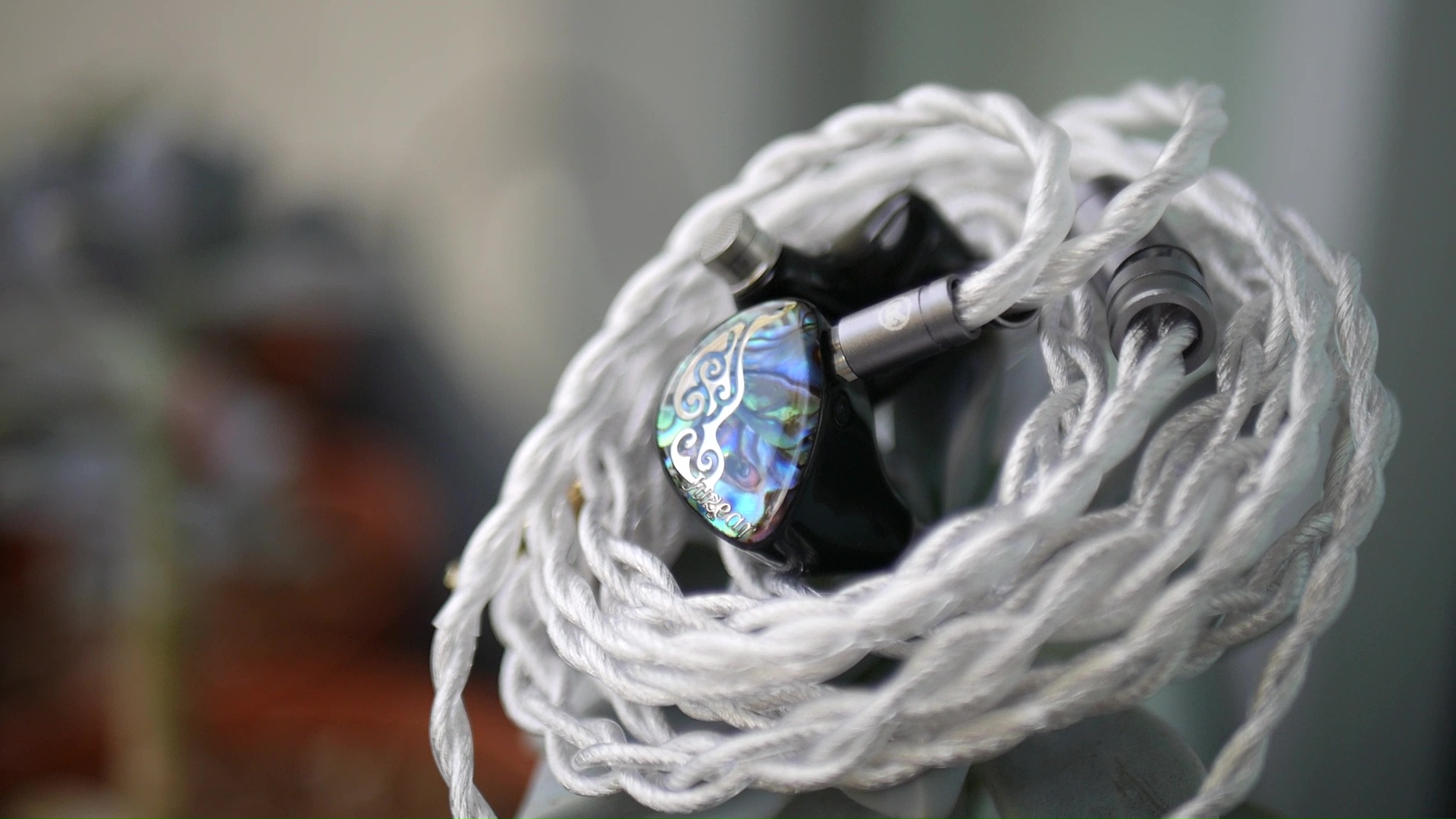
The final track on our timbre test is Synchro BOM-BA-YE by Tokyo Kosei Wind Orchestra. This track aims to test the tonal balance and timbre of the upper midrange and treble region. There are two cues I focus on in this track: the hand claps at the beginning, and the tonal quality of all brass instruments throughout the track. How does 61T fare? Quite good. The claps are crisp and detailed yet natural, and the reverberation of the claps in the recording hall was easily discern, showing a high-quality upper treble response. My only criticism here is that the high brass instruments sound a bit dull and polite, possibly because drums and lower brass instruments are more present than the higher instruments.
In summary, 61T is an extremely well-tuned IEM. It’s correct, it’s natural, it’s pleasing to listen, and it accentuates the technical performance that the driver topology can produce. 5/5 - Outstanding!
Bass and perceived dynamic:
The bass and dynamics are both strengths and weaknesses of 61T. On one hand, the bass of 61T is quite powerful, offering thick, “grippy,” and full-textured lines that provide satisfaction when focusing on doublebasses or bass guitars. In punchy music, 61T delivers effectively. On the other hand, the precision of the bass attack isn’t as impressive as its power and texture. Fast basslines can result in a low-pitch rumble rather than precise note-by-note delivery. In many ways, the bass response of 61T reminds me of that of the ThieAudio Monarch II. If you’re happy with that bass response, you’ll be content with 61T. Conversely, if you aren’t, you won’t find satisfaction in the bass performance here either.

Let’s examine the bass and perceived dynamics of 61T with some test tracks. First up is “A Reckoning in Blood” from The Ghost of Tsushima OST (https://www.youtube.com/watch?v=kaBMXXo-vdU). I’ll focus on the crescendo at 01:10, which an ideal dynamic IEM should effectively communicate. Additionally, the beats from 02:50 need to be strong, snappy, and precise, requiring excellent control across the entire frequency range. 61T excels at conveying the increase in energy level of the track from 01:10 to a toe-tapping, blood-pumping level, with a thick, powerful bass line that’s full of great texture and “grip.” My only complaint is the lack of a razor-sharp attack on bass transients, making the whole bass line less incisive than preferred.
The next track is “Strength of a Thousand Men (Live)” by Two Steps from Hell (https://www.youtube.com/watch?v=POmTXTBtRZA). Here, I’ll pay attention to the quality bass accompanying each beat. An IEM with perfect bass handling should convey a sense of “grippiness” and texture in the bass region, making the bass line growl rather than low-pitched hum. Lastly, every beat must be snappy and incisive to capture the marching energy of this track. In this regard, 61T falls short, as it delivers a constant low-pitch rumble without strong separation between beats. While still powerful and full of texture, this presentation reduces the sense of energy expected from the track.
In general, I consider the bass and perceived dynamic of 61T to be “very good” (3.5/5). The power and texture that its bass response carries set 61T apart from run-of-the-mill options (which I rate 3/5 - Good). However, the lack of an incisive and sharp bass attack hurts 61T’s ability to handle some faster bass lines.
Resolution: To me, “resolution” can be broken down into three components: (1) Sharpness, incisiveness, or “definition” of note attacks (see the figure above). (2) The separation of instruments and vocals, especially when they overlap on the soundstage. (3) The texture and details in the decay side of the notes. The first two give music clarity and make it easy to track individual elements of a mix. The last provides music details and nuances.

The presentation of 61T can be described as detailed and natural. The entire mix, rather than just the upper midrange, is highlighted. Possibly due to the tuning, details are quite prominent. As a result, music sounds dense with information when listening with 61T. However, it does not create a squeaky clean presentation with strong clarity and presence like IEMs that hollow out the lower midrange and midbass. Nevertheless, 61T does not sound congested or muddy thanks to (1) its soundstage and (2) its strong “true” resolution, reflected in its ability to separate overlapping layers of instruments in a mix.
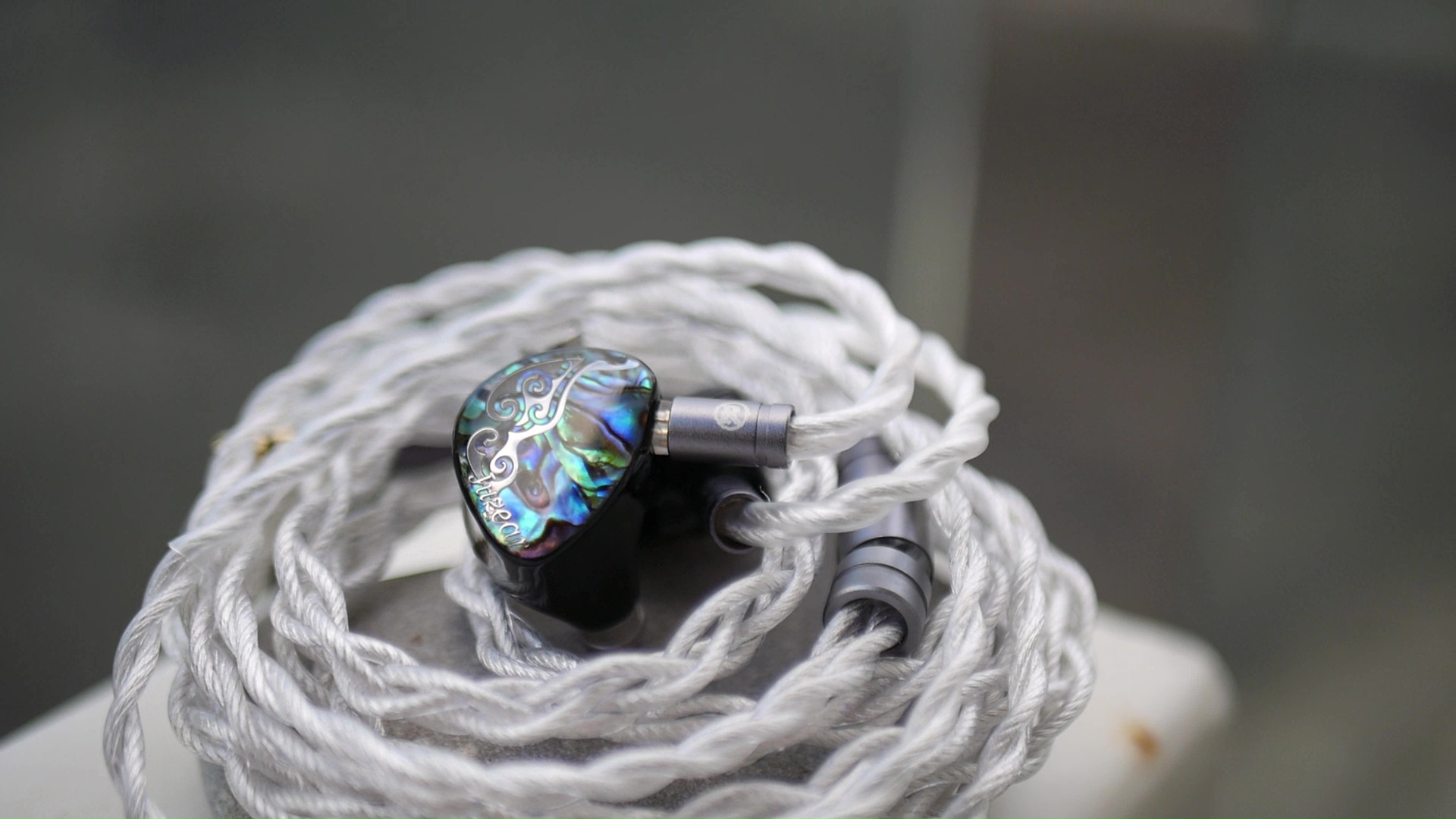
Let’s elaborate on the resolution of 61T with some test tracks. For the first track, we’ll listen again to Ciaccona from Bach’s Violin Partita No. 2 in D Minor, performed by Kavakos. I focus on the micro details such as the bow catching the strings and the quality and nuances of reverberation and decays of the notes. As mentioned above, 61T does a great job with both micro details and reverberation in this track. In direct comparison against Moondrop Blessing 2 (my reference for “good” resolution - 3/5), the major difference was the reverberation, which was almost non-existent on Blessing 2. 61T also reveals more texture and nuances in the sound of violin (in other words, the violin reproduction of Blessing 2 is rather simplistic in this track). In direct comparison against Andromeda 2020 (my reference for “great” resolution - 4/5), I heard a significant difference with my DX300: the background hiss picked up by Andromeda. Other than that, both IEMs convey similar levels of micro details and reverberation. The last comparison is against the U12T (my reference for “outstanding” resolution - 5/5). I found that 61T is quite outmatched here. There are simply more micro details in the sound of violin and the reverberation to pay attention to with the U12T, which also has a dry, “gripping” sensation to the violin tone when listening.

The next track is the “controlled chaos” ABC feat. Sophia Black by Polyphia. With this track, I evaluate an IEM’s ability to handle the complexity of overlapping layers in the mix without faltering. An IEM with ideal resolution would make it easy for me to hear everything down to the faint overdub by Sophia Black on the side channels right from the opening of the track. The 61T does a formidable job with this complex track, not faltering even in densely layered sections. In direct comparison against Moondrop Blessing 2, I found that the 61T can reveal more information across the spectrum and has a more cohesive tonal balance. Despite not having as much upper midrange as Blessing 2, voices and instruments are better-defined and separated with the 61T. In comparison to Andromeda 2020, both detail retrieval across the spectrum and separation seemed to be on par. However, note attacks were edgier with Andromeda, creating an illusion of stronger clarity. The last comparison is against the U12T. In this case, too, I found that the 61T is outmatched in both detail retrieval and instrument separation. The U12T has sharper note definition, and separation of instruments is more effortless.
Based on the A/B test results, I would rate the resolution of the 61T as “great” - 4/5.
Stereo imaging and soundstage: Stereo imaging or “soundstage” is a psychoacoustic illusion that different recording elements appear at various locations inside and around your head. Your brain creates based on the cues in the recording, which are enhanced or diminushed by your IEMs, your DAC, and your amplifier. In rare cases, with some specific songs, some IEMs can trick you into thinking that the sound comes from the environment (a.k.a., “holographic”)

The shape of the soundstage is a strength of 61T: it possesses excellent width, good depth, and typically envelops the head. With various recordings in my collection, 61T often extends the soundstage beyond the ears, especially with instruments placed in the front left and front right regions. Instruments in a mix tend to sit further back, away from the phantom center of the soundstage within the head, contributing to an even more spacious sensation. The upper treble extension allows for well-conveyed reverberation and ambiance. The only limitation, to me, is that 61T lacks laser-sharp instrument positioning to fully maximize this soundstage.

Let’s assess the soundstage and imaging capabilities of 61T using some test tracks. First up is Original Sound Effect Track - Memory from Gundam Seed Destiny OST album. This track contains all sound effects used in the show, arranged atmospherically and immersively. An IEM with an ideal soundstage and imaging should effectively utilize this information to create a diverse soundstage, with sound elements appearing in three dimensions, offering contrast between near and distant sounds. Many elements on the left and right channels will seem to originate outside the ears. 61T excels at this task, particularly impressing me with its contrast between near actions occurring at the center of the soundstage and instruments positioned further away to the sides. Comparing it directly to Moondrop Blessing 2 (my reference for “good” soundstage - 3/5), the difference in depth illusion and instrument layering is quite noticeable. While Blessing 2 feels more two-dimensional, 61T offers a wraparound, three-dimensional experience. Comparing it to Andromeda 2020 (my reference for “great” soundstage - 4/5) yields similar results: both offer a wraparound, 3D presentation; however, the 61T’s stage expands further out to the sides, whereas Andromeda 2020’s center of the stage feels farther from the head. Finally, comparing it to U12T (my reference for “outstanding” soundstage - 5/5) reveals that in terms of soundstage shape and extension, 61T is quite comparable. However, the U12T outperforms 61T regarding the precision of instrument localization on the soundstage.
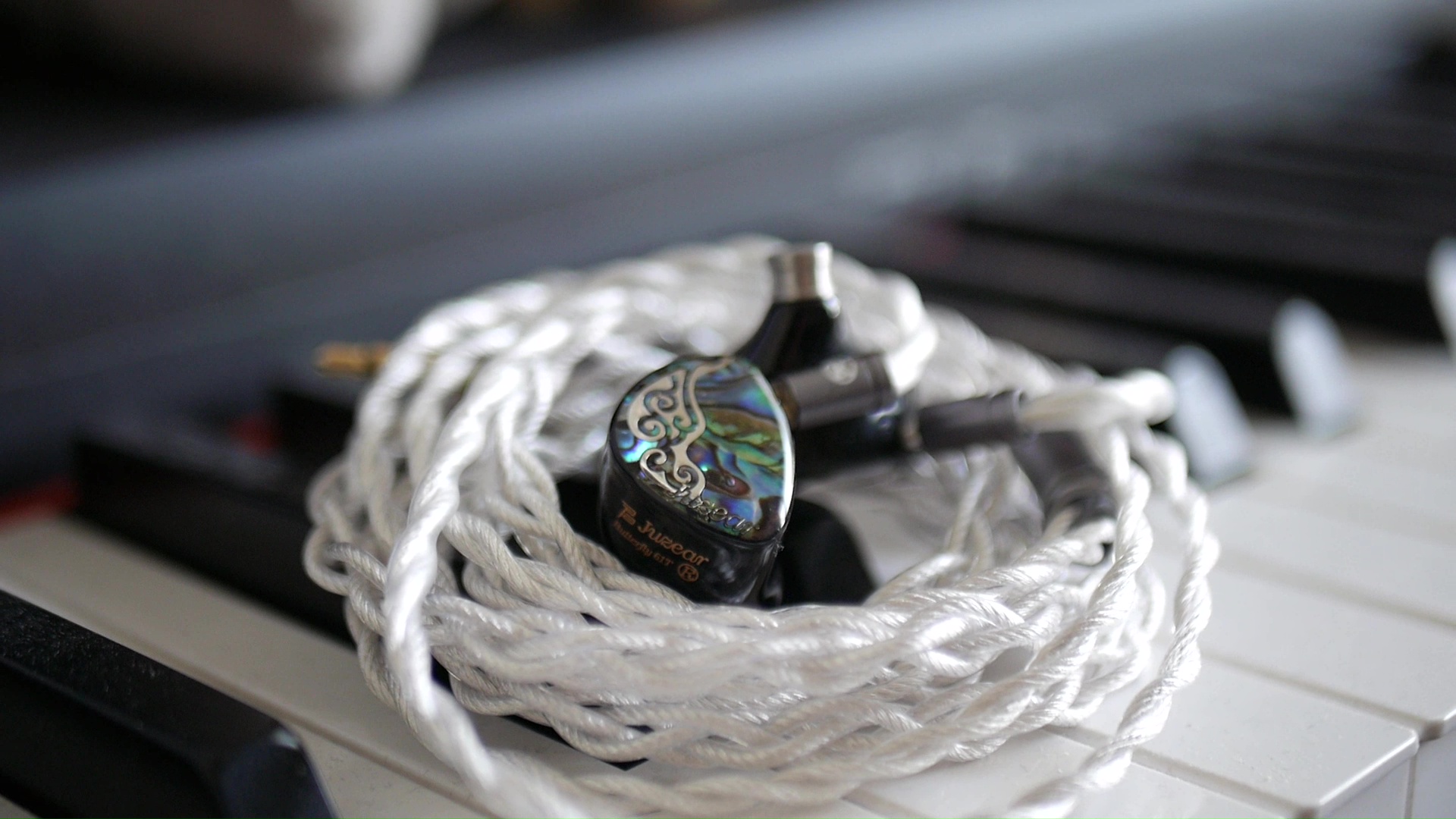
The next track, Shadow of Baar Dau, tests an IEM’s ability to convincingly portray background element distance, such as the string section at 00:20 on the front left and vocal chants on the front right at 00:40. A perfect soundstage and imaging should make this track feel spacious, creating an illusion that some background elements originate outside the head, providing a fully immersive experience. The term “immersive” accurately describes 61T’s presentation. When compared to Blessing 2, I found that Blessing 2 presents a more compressed and flat soundstage, lacking the forward-backward projection of 61T. Comparing it directly to Andromeda 2020 reveals consistent observations from previous test tracks: 61T’s soundstage is as wraparound and three-dimensional as Andromeda, but with better width, while Andromeda has more depth. Comparing 61T to U12T demonstrates that the overall presentation of the soundstage for both 61T and U12T are quite similar, yet U12T excels in precise instrument localization within the expanded soundstage.
Based on these comparisons, I would rate the soundstage imaging capability of 61T as great (4.5/5). The additional 0.5 over Andromeda 2020 emphasizes that its soundstage is more open and extends further out than Andromeda 2020; however, it still lacks the necessary precise localization to achieve an outstanding rating (5/5).
Driveability

61T is easy to drive due to its higher than average impedance of 46 ohm and high sensitivity of 115 dB/mW. The high impedance positions the 61T in an optimal range for portable DAC/amps such as the famous Apple USB-C to 3.5mm adapter (also known as the “Apple dongle”). With this device, the IEM produces a satisfactory sound quality. The soundstage can still extend further in all directions; however, most of the audio concentrates in the middle and is quite forward, which doesn’t allow for optimal soundstage perception when using the Apple dongle.
Upgrading to sources with stronger amplifiers like R3II and DX300 results in noticeable expansion of the soundstage. Instruments at the center are more spread out, while those in the background are pushed further away. Incorporating the Topping G5 as an amplifier alongside the DX300 leads to another improvement, particularly in terms of soundstage expansion.
Based on these findings, it’s recommended to use a good USB DAC to fully harness the potential of 61T. That said, I wouldn’t shy away from using it directly with the Apple dongle or a laptop output.
Comparisons
TBA
Conclusions

“What’s the point?”
That’s a question I sometimes get asked when I talk about my hobby of testing and reviewing IEMs, a valid question in a fast-moving and somewhat homogeneous IEM market. For me, the point of this whole journey is to find “unicorns”: the ideal IEMs that sit in the Goldilocks zone of tonality, technical performance, and price tag. To me, 61T is one of those unicorns.
Should you buy the 61T? As usual, it depends. The first question you need to ask yourself is what you think about the tonality of “full Harman” IEMs. If you think Harman is just right, then you might find the tonality of 61T a bit too thick and dull. The second question is how often you listen to fast basslines in your music. If your library is primarily lightning-fast metal music, 61T’s bass might not keep up. On the other hand, if you listen to a combination of large orchestral music, soundtracks, acoustic recordings, songs, with a few rock and metal tracks here and there, if you value a neutral warm midrange, if you pay a lot of attention to the soundstage, imaging, and details in your music, 61T receives a recommendation and a seal of approval from this reviewer.
What I like about this IEM:
- Beautiful tonality
- Great soundstage with good expansion and forward projection/depth
- Good instrument separation and layering
- Great micro-details
- Strong and textured bass response
- Good isolation
What could be improved:
- Bass transients are not snappy enough for some fast bass lines
- Imaging could be more precise
- Large nozzles
- Driver flex
Absolute Sonic Quality Rating: 4.5/5 - Great
Bias Score: 5/5 - I love this IEM!

